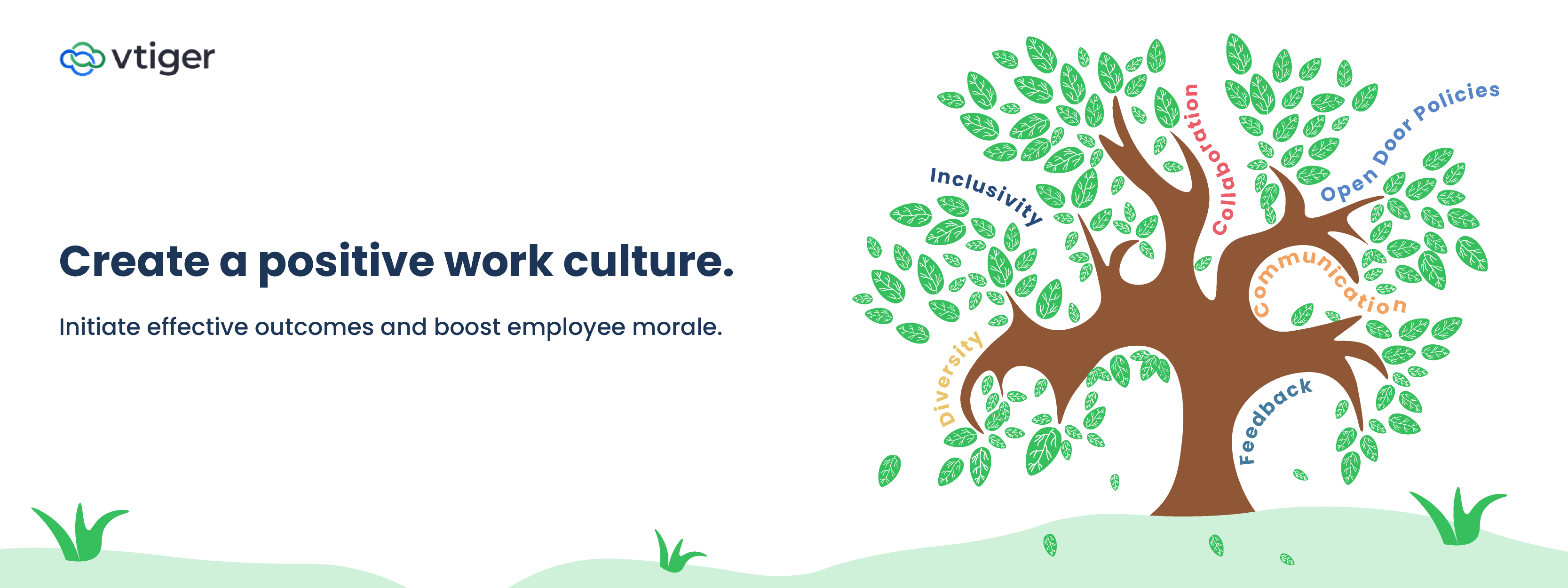If you are an employee, you must have come across the term ‘work culture’. Work culture is a shared set of beliefs, practices, and ideologies that organizations define for their employees.
But have you ever been a victim of a toxic or negative work culture? As per the SHRM report, one in five Americans has left a job in the past five years due to bad company culture. When you look around you will find many examples like managers calling employees post-work hours, organizations that expect employees to work for thirteen hours a day, and routine assignment of tasks during weekends and holidays.
Negative work culture is not just toxic but creates an adverse impact on employees’ emotional and physical well-being.
Defining positive work culture
To avoid employee turnover, organizations need to establish a positive ambiance that promotes a healthy work atmosphere, diversity, teamwork, good leadership, a culture of constructive feedback, etc.
A positive work culture enhances productivity and results in better performance. And, also when your employees feel valued, they will be able to produce better outcomes.
Research by Deloitte has shown that 94% of executives and 88% of employees believe a distinct corporate culture is important to a business’s success. Deloitte’s survey also found that 76% of these employees believed that a “clearly defined business strategy” helped create a positive culture.
So how do you create a positive work culture
There are numerous ways you can create a positive work culture:
Promote employee health

Employees need to be physically and mentally fit to be able to focus on work. Mckinsey’s report displays that 38% of Indians experienced burnout at the workplace despite keeping mental health as a top priority.
Monitoring employee health and recognizing signs of stress is important for those in managerial roles. Insisting on regular breaks, vacations, and holidays enable an employee to put in their best at all times.
Promote conversations
A survey report suggests that 81% of employees would rather prefer to join an organization that values open communication than the one that offers great perks.
If employees are encouraged to speak up and reach out for help, there will be better collaboration within teams and across the organization. When employees get a sense of belonging in the workplace, they will start speaking up about their problems with their co-workers which will help in minimizing their stress levels.
Promote inclusivity and diversity
Today the world is just a global village. The article Unleashing the power of inclusion published by Deloitte found that the proportion of executives who cited inclusion as a top priority rose by 32% from 2014 to 2017.
With people migrating across the world, Human Resource (HR) departments should keep in mind to hire people from different backgrounds, cultures, ethnicity, race, etc., to exchange different ideas and perspectives. They should create a cohesive environment to promote collaboration and teamwork.
Open door policies
They ensure employees can reach out to managers and highers up for help, guidance, mentoring, and even to lodge complaints. When employees are heard, they feel a sense of belonging.
Findings from a study of 7,578 subordinates and their 335 general managers within a national restaurant chain indicate that agreement between employees and managers that employees display a high level of voice leads to favorable outcomes for employees, by Informs PubsOnLine
Encourage team-building activities

Employee engagement is essential to create a bond between the team members. A report by Deloitte displays that more than eight in ten executives rated engagement as important or very important.
Employee-friendly activities improve engagement levels like team building activities, team outings, socializing outside work, working lunches, etc., helping employees to learn about one another. Team building activities ensure the focus is on a team instead of the individual.
Benefits of creating a positive work culture
The advantages of positive work culture are many, but you need to have clear designed strategy and dedication to implement it.
Some common benefits are:
- Enhanced team collaboration
- Reduced stress levels
- Better performance and productivity
- Improved employee retention
Enhanced team collaboration:
If employees can talk to anyone in the organization regardless of their position, there will be better collaboration and teams will not be reluctant in taking help from each other if they get stuck.
Reduced stress level:
When employees get a sense of belonging in the workplace, they will start speaking up about their problems with their co-workers which will help in minimizing their stress levels.
Better performance and productivity:
Employees need to be physically and mentally fit to be able to focus on work. If no distractions are coming in between, they will be able to give you a better output.
Improved employee retention:
And the most important benefit of all is retention. A healthy workplace is one where everyone is open to good conversations, suggestions, feedback, and issue resolution. Organizations that recognize and reward employee performances, and provide benefits can make employees stay for a longer time in the organization.
There are myriad ways to create a positive work culture. Try these solutions in your business and set an example for others to follow.
Before wrapping up, please check out this video to get a broader perspective.






